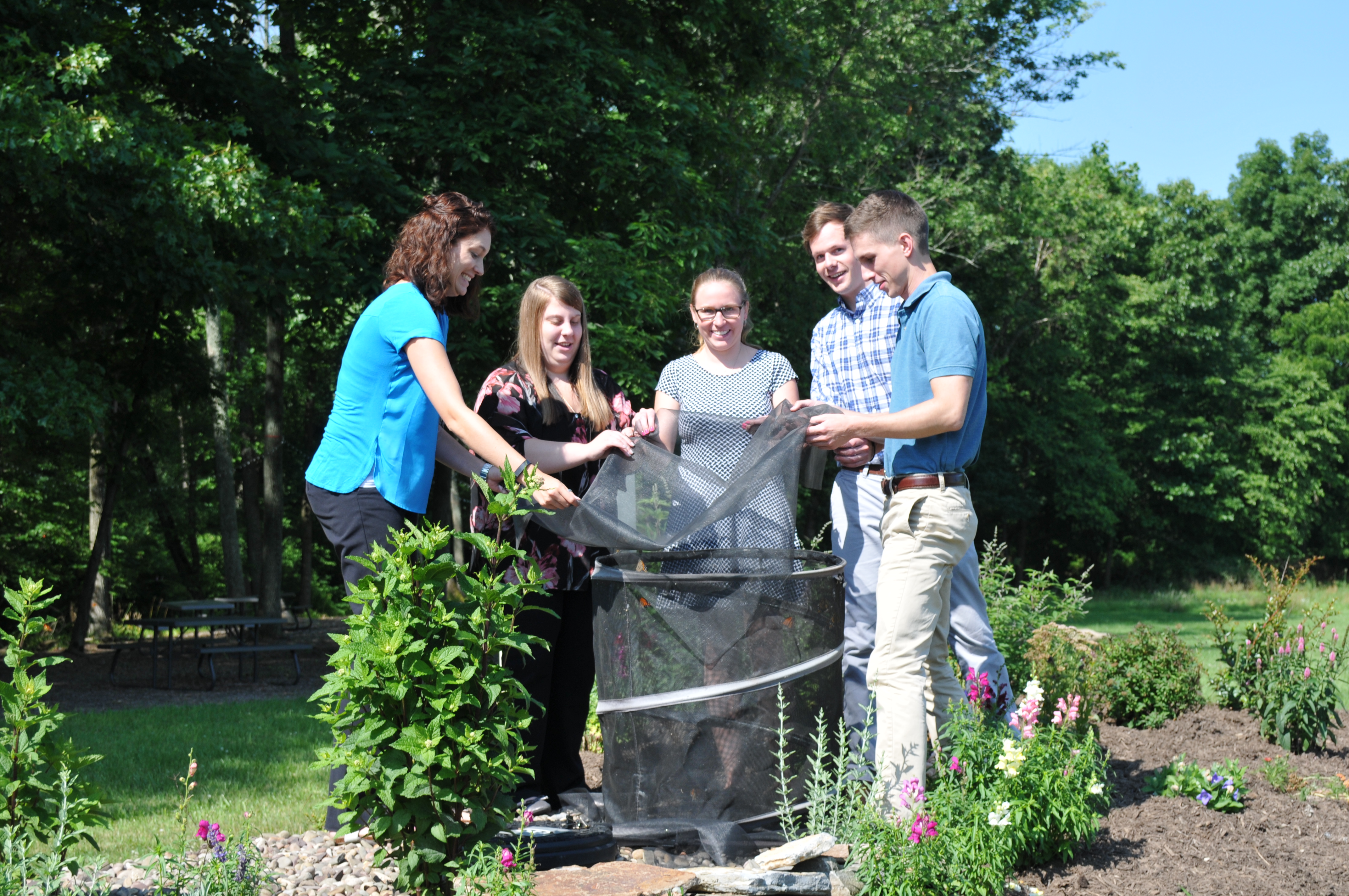

Two weeks ago Solar received a delivery of Monarch pupae from Lancaster, PA. Upon opening the package our greenhouse expert placed the chrysalises in our butterfly habitat located in our greenhouse to hatch. Usually, Monarch chrysalises hang on branches, plant stems, or sturdy leaves.
Recently, after ten days in the habitat, butterflies hatched out of their chrysalises, after allowing the butterflies to dry their wings out our expert collected ten butterflies to be released outside of our main building. They were then placed in our tropical greenhouse to warm up to increase their activity. Typically the warmer the butterfly is, the more it will fly.
During morning break on July 6th, members of the Solar Innovations ® team gathered in Solar’s butterfly garden to release the Monarch to start their migration. The release was a great chance for team members to help the environment, as well as learn about butterfly migration from our greenhouse expert.
Every year, usually in the spring around March, Monarch butterflies start their migration cycle. On average they can travel around 2,000 miles for their migration, traveling around 75 miles a day. The starting location of where they originate from dictates where they migrate to. Butterflies starting their migrations on the Eastern part of the United States will travel to central Mexico. While butterflies from the Western United States journey to California. Along the way the first generation will lay their eggs on milkweed plants. After about 10 days the second generation of Monarchs will hatch, and then continues to travel and lay eggs along their way. This cycle continues until they reach their final destination. Monarchs typically have a life cycle of two months. While ten of the butterflies were released to complete their migration, our greenhouse expert kept several of the Monarchs in our habitat to study and observe.

